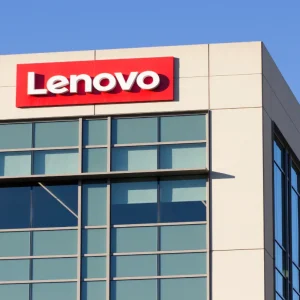
Better late than never: last month Red Hat celebrated 25 years. (The cake and candles may seem like ancient history to Jim Whitehurst, CEO of the open source pioneer, but we believe in prolonging anything involving icing.) Jim spoke with Computer Business Review; looking both back on 25 years of Red Hat and to the future.
 Let’s Start From the Very Beginning
Let’s Start From the Very Beginning
Red Hat opened its doors in 1993, offering open source solutions as an alternative to traditional software to organisations. The company moved to replacing existing software, UNIX, with Linux in mission critical environments for the eight years to follow its launch and all without a business model in place.
“We weren’t profitable, we went public with this huge bang but we didn’t have a business model. We began establishing ourselves as a leader in open source for the first eight years, then begun demonstrating open source was a viable alternative to traditional software for the next nine years,” Whitehurst told Computer Business Review. “Then something interesting happened around 2010; big web companies began to do all their software development in open source, so it was no longer a viable alternative but open source was leading innovation.”
Despite not having a business model, organisations thrived on Red Hat’s offering’s as more and more began to see the benefits the business had to offer to them and how the technology could enhance the services they delivered.
“What makes Red Hat different is our offerings; we have free version of everything we do. That degree of freedom where people can try things and work and figure out how to buy it later is a real benefit that enterprises see.”
Cloud computing and open source have changed the way businesses operate, but Red Hat has a vision of what its services will look like for the foreseeable.
Red Hat’s Vision
One of the things Red Hat prides itself on is the difference from other vendors locking customers into a contract, almost forcing them to remain loyal despite wanting out.
The open source company made its mark on the industry for doing the opposite and instead of ‘locking-in’ customers, they were given the option to remain a customer or depart to an alternative dependent on their individual needs and aims.
“The problem with software is you start using it and then it’s really hard to get off of it and then there’s this perception that once you get locked in you kind of get abused by the company that sold it to you, because they know you’re locked in,” Whitehurst explained. “I think there was a desire to break that lock-in from all kinds of levels within the enterprise, which brought people to say ‘hey this is a cool movement’ [from Red Hat] that there’s different ways to consume software.”
Whitehurst explained that Red Hat had a vision of moving from traditional to transitional, giving customers the freedom to innovate and trial new things in comparison to what other organisations would be able to offer in a rigid traditional environment.
The company wanted to move into an established market, but change the rules.
“It’s like being in a traditional company and wanting to be in an upstart innovator; the same way Ryanair’s and EasyJet’s are that Red Hat is that in software. A different model, different rules and because we’re growing in this big Greenfield there’s a lot of opportunities to try new things,” Whitehurst said. “The idea of being able to apply a degree of creative freedom and the ability to try things and do them in a different way had huge huge appeal, and frankly still does.”
What the Open Source Future Holds
Throughout the quarter of a century Red Hat has been operating, Whitehurst outlined some of the most special moments for both himself and the company.
“The two that still come to mind is when the stock exchanges started adopting the Red Hat real-time version of the OS, which came about because the US Navy worked with us to develop the solution for anti-missile defence. Because of that work we did with the navy, all of a sudden every stock exchange and trading platform wanted to use that,” Whitehurst proudly told CBR. “What I like about these achievements is it demonstrates the idea of this technology that it’s written for one reason but can be completely used in other ways.”
Despite thinking the outcome is not short of being delivered soon, the CEO admits there are some challenges still to overcome before this can happen; in security, but the benefits of the transparency of open still will help to drive the adoption despite some concerns.
“The negatives were, of course, all the funding and the concern around is it safe; is it secure; can it really run a mission critical workload and how is it supported. But we helped validate that kind of wave that it is reliable and does keep costs down,” Whitehurst beamed.
Looking to the future, Red Hat’s CEO believes that open source will one day become the default choice for computing and it only has a ‘little way to go’ until that time arrives.
“I do think that over the next ten years we will see open source become the default choice for this next paradigm of computing,” Whitehurst predicted. “Over the next ten years we want to clearly see that default choice and certainly over the next 25 years the majority of software having moved to that phase and obviously Red Hat’s role in that is to continue to be the best partner for enterprises to do that.”

 Let’s Start From the Very Beginning
Let’s Start From the Very Beginning




